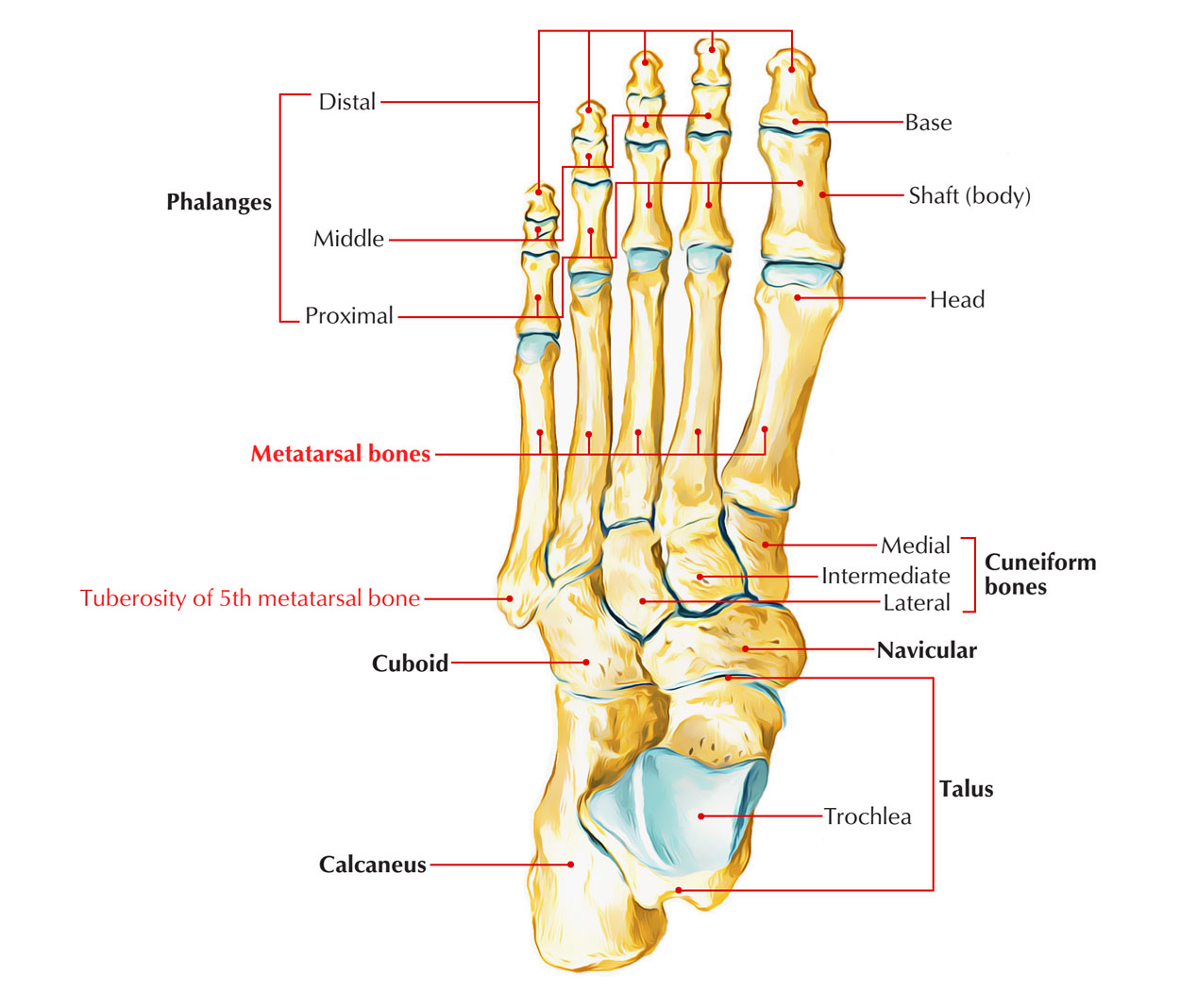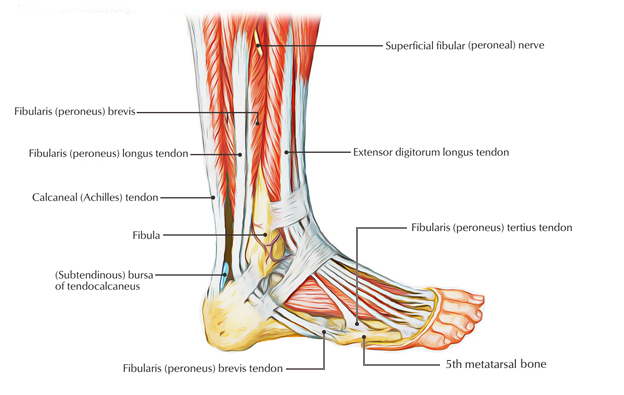As the four other metatarsals bones it could be split into three parts; base, body along with head. The base is the part nearest to the ankle as well as the head is nearest to the toes. The narrowed part in the middle is described as the body of the bone.

Fifth Metatarsal
Surfaces
- The bone is rather flattened providing it two surfaces; the plantar (to the sole of the foot) and also the dorsal surface (the area dealing with higher while standing). These surfaces are rough for the connection of ligaments. The bone is rounded longitudinally, so regarding being scooped below, somewhat convex above.
- The proximal portion of the fifth metatarsal, featuring this bulge, is easily noticeable on radiographs and also is a common trauma site for the foot; this area should be well imagined on radiographs.
- The base of the fifth metatarsal is broadened laterally into a noticeable rough bulge, which offers the connection of a tendon.

Fifth Metatarsal
Fractures
Fractures of the fifth metatarsal vary significantly from those of the first and the middle three metatarsals. Some dissimilarity can be credited to distinct intrinsic and extrinsic muscle connections and the position of the fifth metatarsal.
Since it is supported by another metatarsal just on one side, the fifth metatarsal is more susceptible to injury than are the middle three.
Another distinct function of the fifth metatarsal is the existence of a plantar fascial connection at the base in addition to the peroneus brevis along with peroneus tertius connections.
Four kinds of fractures can happen in the fifth metatarsal, as follows:
- Proximal metaphyseal avulsion fracture of the base.
- Severe fracture of the proximal diaphyseal-metaphyseal junction (Jones fracture).
- Tension fracture of the proximal diaphyseal-metaphyseal junction (this injury is regularly called a Jones fracture because of its location: nevertheless, it varies via a true Jones fracture in etiologic and treatment factors to consider).
- Severe diaphyseal fracture.
Clinical Significance
Treatment for Fractures
The treatment standards for fifth metatarsal fractures are warranted in view of the high occurrence of nonunion and postponed unions in this area and the extended symptoms and impairment they trigger. One factor adding to the high occurrence of postponed union and nonunion is restricted blood supply to the metaphyseal- diaphyseal junction.
A large portion of the fifth metatarsal is right away under the skin and produces a senior prominence along the lateral column. The capacity for deformity here is high since the plantar fascia, the peroneus brevis, and the peroneus tertius connect into the diaphyseal-metaphyseal junction. Injury to these muscles need to be prevented, especially to the two extrinsic muscles that restrict dorsiflexion as well as eversion of the foot and counter-act extreme inversion throughout running, jumping and quick maneuvering.

 (50 votes, average: 4.56 out of 5)
(50 votes, average: 4.56 out of 5)